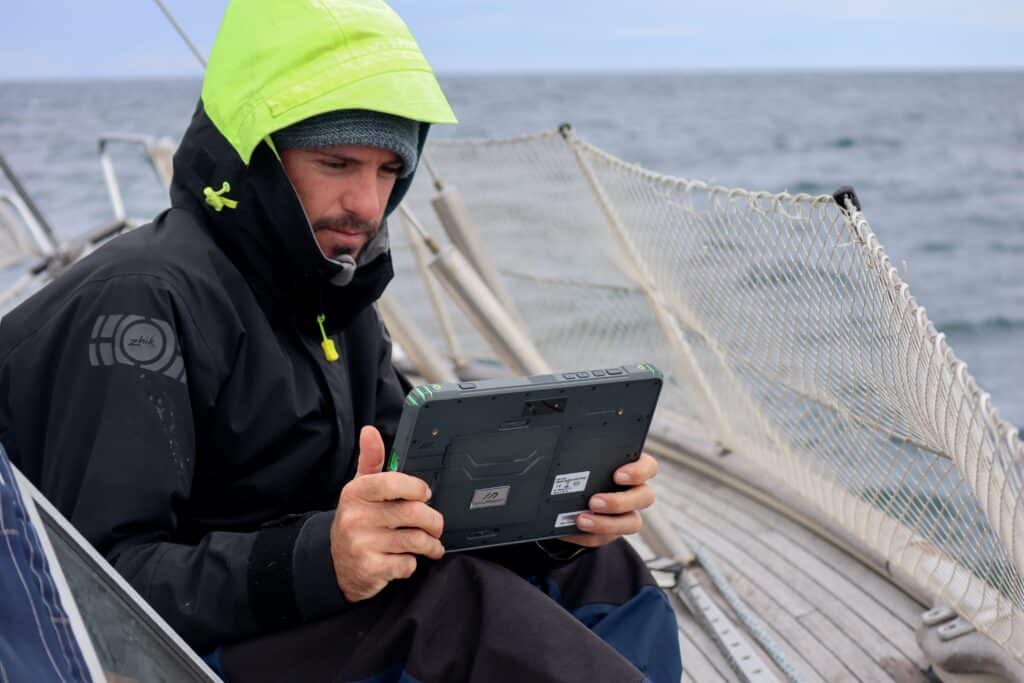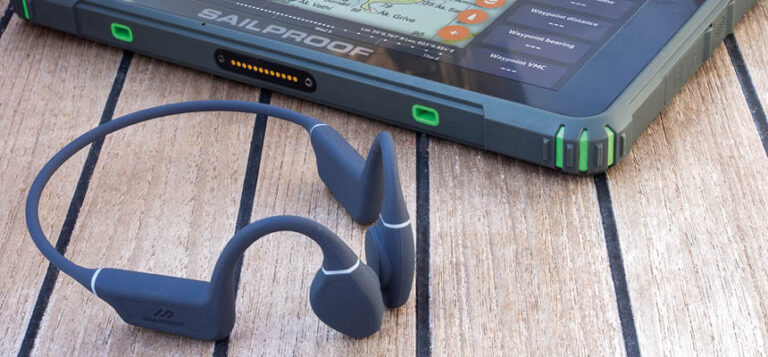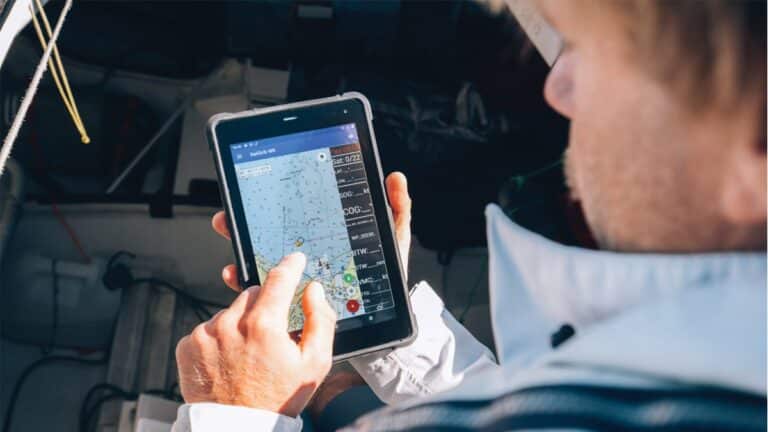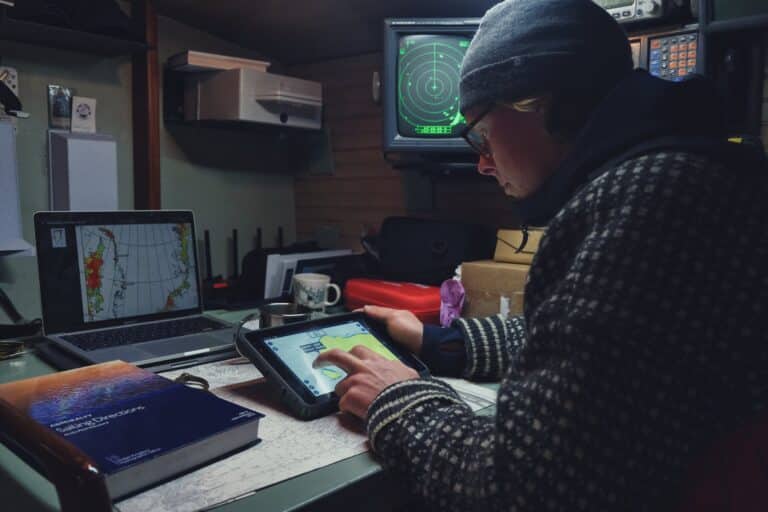To some, it might sound a bit like science fiction, but then again, fiction is catching up to us rapidly. Innovations happen daily and can prove to be of great help. The sailing world is full of them too, and we can all benefit from smart–and often cheap–solutions. Marine autopilot control on Android is less widespread than in the iOS environment. However, this is changing rapidly, with a few major sailing applications having launched updates to support autopilot control via an NMEA/WiFi environment.
But what can one gain from controlling their autopilot via an app?
Setting up an additional control panel for your autopilot offers many advantages over relying on a single fixed control screen. First and foremost, it allows you to make course adjustments from anywhere on board.
Imagine a perfect champagne sail: you’re lying on the foredeck, your rugged SailProof tablet next to you, checking the map and AIS for incoming traffic, all while watching dolphins play at the bow. Now, instead of heading back to the cockpit, you can fine-tune your course to account for a wind shift or an approaching boat—right from where you are. Pretty neat, right?
But let’s be real. More likely, you’re on a multi-day passage, cold and seasick inside the cabin. The wind shifts a few degrees, but you just got settled and don’t feel like getting up. With your tablet in hand, you can check traffic, monitor onboard cameras, and adjust your route with just a few taps—all without stepping outside, just like the good old days :).
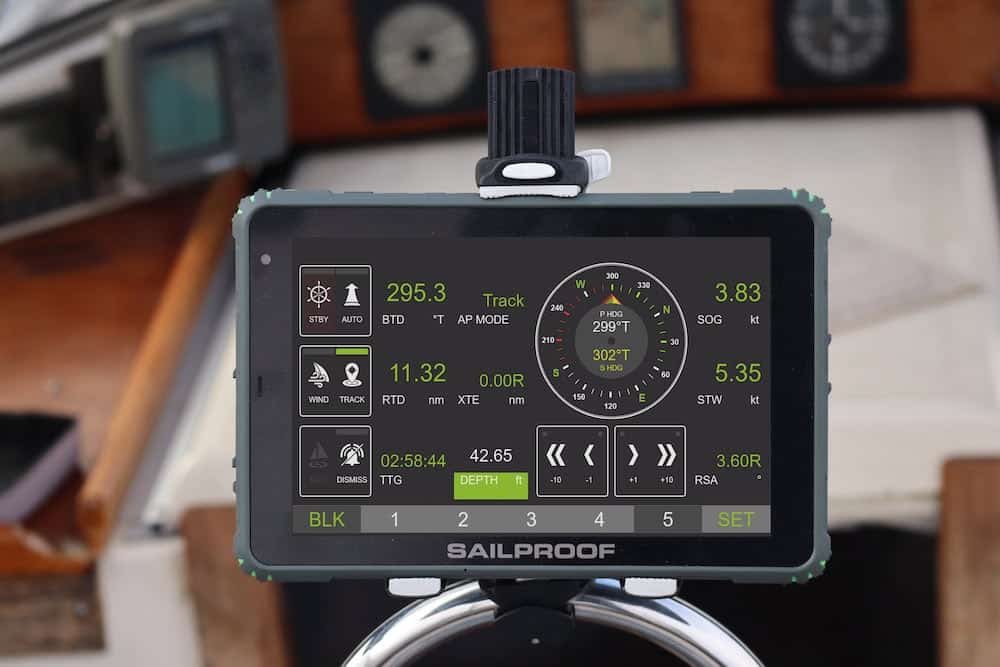
Beyond convenience, automating navigation has another key benefit. Some apps allow you to follow a predetermined route and send commands directly to the autopilot, similar to the sophisticated systems used on large motor vessels. Understandably, some sailors might feel uneasy about letting a “computer” take over, but in certain situations—especially for single-handed sailors—this can be of benefit.
Lastly, having an extra control option via WiFi can be invaluable if your primary control fails or isn’t positioned in the most accessible location. In short, an additional autopilot control panel is not just a luxury—it’s a smart, practical upgrade.
Although controlling your autopilot remotely via WiFi might not be on your priority list, it’s becoming broadly available and, as such, is worth looking into, especially if your boat already has an NMEA/WiFi setup, thus allowing you to have a free remote for your autopilot.
Autopilot control: How to set it up on your navigation tablet?
To begin with you’ll need an autopilot compatible with NMEA2000 or NMEA 0183. The next step is to make the NMEA data available in an WiFi network, this can easily be made with an NMEA to WiFi converter, nowadays broadly available from various suppliers:
· Digital Yacht (make sure to take advantage of our partnership)
· Yacht Devices
· NKE Marine Electronics
· Actisense
· ShipModul
· Vesper Marine
· Brookhouse
· Orca core
Having your NMEA data (autopilot, depth, wind, AIS, etc.) available on a WiFi has the benefit that it’s not only available on a single dedicated screen, but now available on a number of smart devices (tablets, smartphones), giving oversight from anywhere and anyone on board. To access and control this data brings us to the next step, the right app or web interface. Here the options are expanding rapidly and we probably won’t be able to keep up to date, so make sure to launch your own investigation in to the plethora options. Nevertheless here a bit of an overview of some of the options:
Autopilot controlling Android Apps
- First and foremost, our partners at AquaMap, providing an outstanding navigation app that offers excellent NMEA data integration, including AIS, Depth, Wind, Compass, and GPS. Since the summer of 2024, AquaMap has introduced autopilot integration directly within the app. This feature allows you to follow an active leg of your route with commands sent directly to your autopilot via NMEA 0183 sentences. For this to work, your autopilot must be “intelligent,” meaning it needs to be capable of receiving route waypoints via NMEA. Once set up, the app can send real-time data to the autopilot, including the active leg of the route, the boat’s position, the distance to the route, and other crucial information that enables the autopilot to adjust the rudder accordingly. The NMEA sentences required for this integration are APB, RMB, and XTE. You can find more information on supported devices on AquaMap’s dedicated page.
- The i-Boating app offers extensive nautical charts, route planning, AIS support, and NMEA 0183 autopilot integration. When using “Route Assistance” or “Go to Waypoint,” it can send autopilot commands over TCP, with customizable talker ID and NMEA settings. While it requires an autopilot that supports NMEA 0183 over TCP/IP (or an NMEA-WiFi bridge), it provides a powerful yet lesser-known alternative to apps like Navionics.
- OpenCPN offers a range of integrations and features. As it is not really a commercial product (currently available for a small fee), the layout can feel a bit robust and less intuitive for some users. However, with patience, it provides a wealth of functionality for an almost free app. While OpenCPN doesn’t have a direct autopilot feature, some research suggests that autopilot control via NMEA 0183 is possible with certain autopilot units.
- The Orca app combined with the Orca core provides an alternative platform to control your autopilot and to display your onboard NMEA data on to their in house maps, using your marine tablet.
- TimeZero app, although not yet available for android. At the time we write this article, a beta version of the Android TimeZero app has been released for test. TimeZero app will offer great functionalities also including autopilot integration.
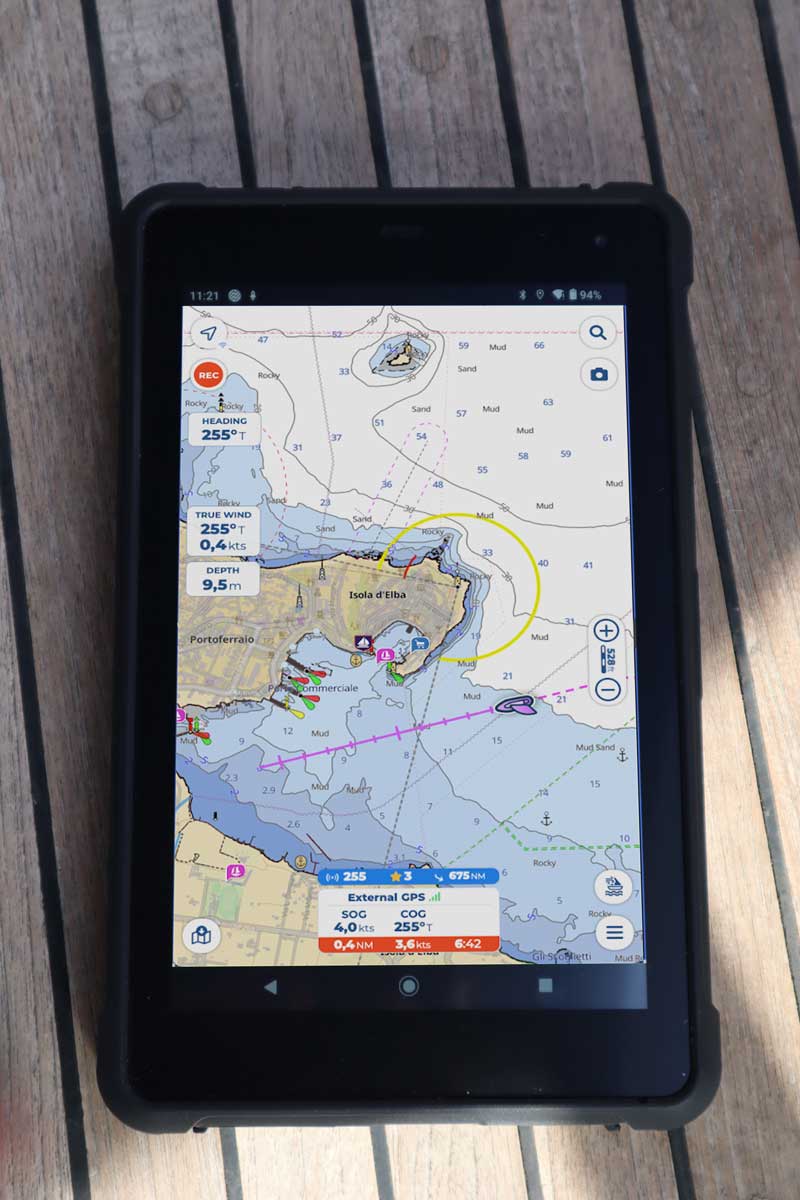
(c) SailProof
Autopilot controlling web interfaces
Apart from apps more and more developers of NMEA devices and converters offer their own Web based interfaces that allow the visualization and customization of data, lately also the ability to sent data and control devices including autopilots. Same can be accessed simply via a web browser once connected to NMEA WiFi network. One such example is the web interface that Yacht Devices offer along with their WiFi gateways, providing versatile solutions for displaying NMEA data and controlling the autopilot via NMEA 0183/2000. Further options emerge constantly including the open source platform SignalK and others, while the option of controlling your autopilot via screen mirroring of your main chartplotter is also an option worth while exploring.
Conclusion
With the gradual unification of marine data into NMEA, integrating a wide range of signals into the network and developing Wi-Fi gateways has become significantly easier. Today, the possibilities are nearly limitless—monitoring everything from lights and water levels to engine performance, depth, air temperature, and AIS traffic, as well as controlling your autopilot, can now be done seamlessly and effortlessly. Apps and web interfaces make this data accessible not only onboard but also from thousands of miles away.
While not every piece of information is always essential, this shift has enabled sailors to move beyond expensive, complex chartplotters and adopt multifunctional, rugged marine tablets like SailProof. Offering the same reliability, waterproofing, and sunlight-readable screens—along with greater flexibility and expanded functionality—these tablets provide a cost-effective, user-friendly solution to enhance your sailing experience.
